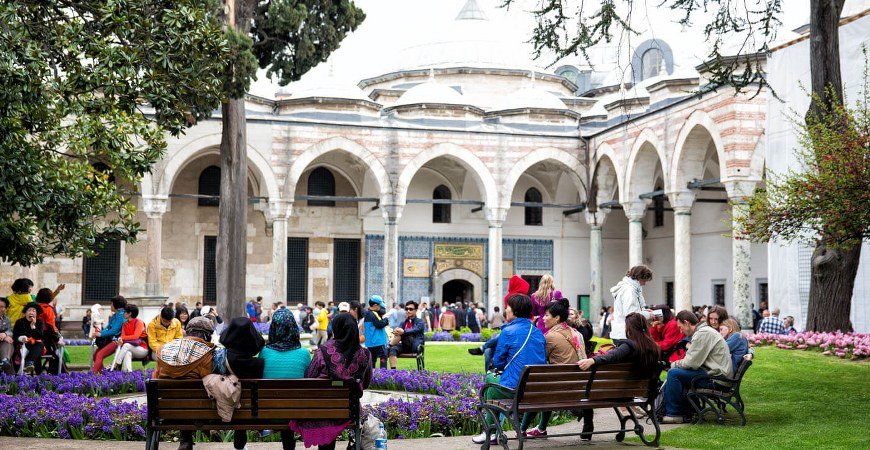About Topkapi Palace Istanbul,
SECTION OF CHINESE AND JAPANESE PORCELAIN
The Ottoman rulers prized Chinese porcelain and from very early times, through gifts, booty or purchase, collected vast quantities of it. More than ten thousand pieces remain, and six thousand of these are on display in chronological order. A few go back to the Tang period. The great majority are of the Sung and Yuan dynasties, that is of the ninth to the fourteenth centuries. This is undoubtedly the largest collection in the world, both in numbers and in the variety of styles represented. In one and the same room can be seen Ming porcelains of the white, colored, emperor yellow, and blue-white varieties. Five hundred pieces, which, after their arrival in Turkey, were ornamented with rubies and emeralds set in gold, constitute a unique collection. Next come porcelain of the fifteenth to the seventeenth centuries, ()I’ the blue-white, pink and green kinds, the inscribed specimens being particularly of note. The last section consists of porcelain of the eighteenth century, of the blue-white, pink, buff and dark blue shades. In the same hall are exhibited Japanese porcelain of the seventeenth and eighteenth centuries.
SECTIONS OF EUROPEAN PORCELAIN AND CRYSTAL
Various sets of Vincennes, Limoges, Sevres, J. P. and other French porcelain are displayed in series. Of special note are the dinner sets made to order for Turkey. Next to the French is the Russian porcelain, then pottery dinner sets made in Warsaw and decorated with Turkish writing. Among the Berlin, Meissen and Vienna porcelain, are many rare pieces of unusual shape and design made to order for the Ottoman market? Examples of Irish, Venetian and Bohemian crystal glassware and crystal candelabra are to be seen in the same hall. The porcelains exhibited in this hall represent almost all the known existing varieties, from the earliest Chinese to modern European. Moving from case to case, the visitor goes on a journey around the world: the special characteristics of the porcelain art of each country are displayed here.

Leave a Reply